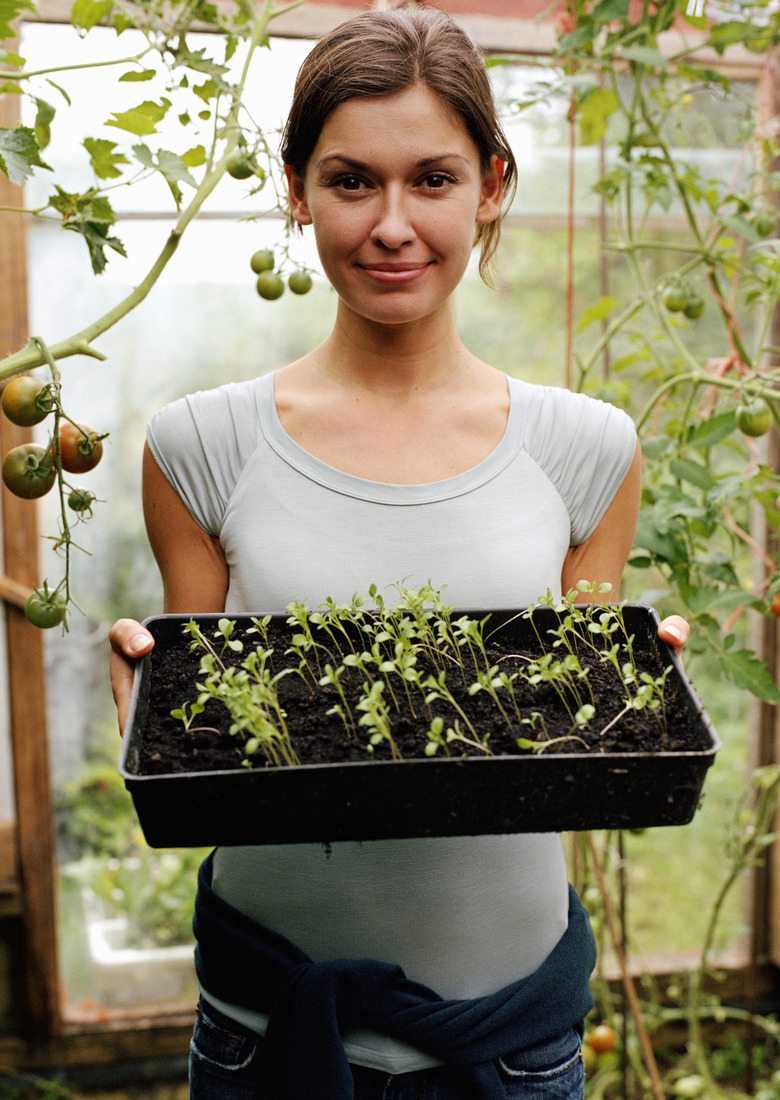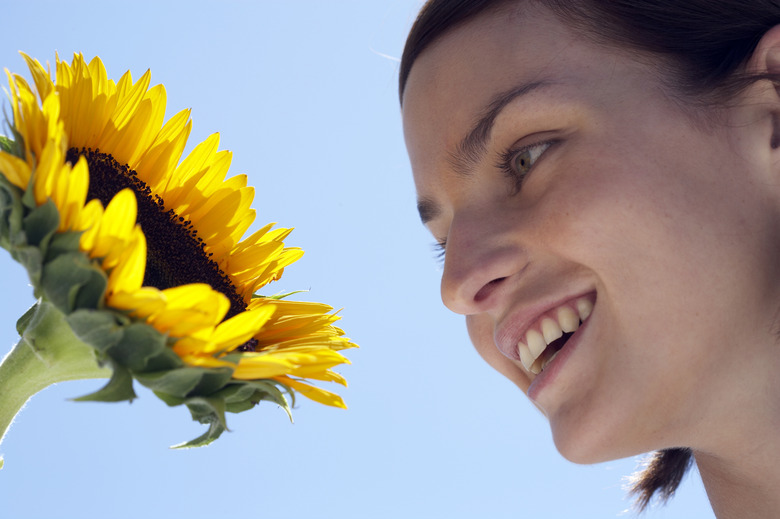What Do Chloroplasts Use To Make Glucose?
Chloroplasts are the original "green" solar power transformers. These tiny organelles, found only in the cells of plants and algae, use energy from the sun to convert carbon dioxide and water into glucose and oxygen. Dan Jenk, science writer for the Biodesign Institute at Arizona State University describes the process as follows, "...plants approach the pinnacle of stinginess by scavenging nearly every photon of available light energy to produce food."
In this article, we're going over the general process of photosynthesis, how the chloroplast functions, and how it works to use chemical inputs and the sun to make glucose.
Chemical Potential Energy
Chemical Potential Energy
Energy that is stored within a molecular bond is called, "chemical potential energy." When a chemical bond is broken, such as when a starch molecule is eaten then broken down in the digestive system of an animal, energy is released. All organisms need energy to survive.
The main molecule used for energy in living organisms is called ATP. ATP is generated in cells via glucose and complex metabolic pathways. In order to get glucose, though, plants, algae, and other autotrophs must convert solar energy into glucose via a process called photosynthesis.
Photosynthesis: The Reaction
Photosynthesis: The Reaction
Photosynthesis converts light energy into chemical energy that is stored in the molecular bonds of glucose. This process takes place in chloroplasts. A plant uses the glucose molecules to create complex carbohydrates — starch and cellulose — and other nutrients that it needs to grow and reproduce. Photosynthesis thus makes it possible to convert light energy to a form of energy that can be used for food, by both the plant and the animals that eat the plant.
Photosynthesis can be represented by the following simplified equation:
**6 CO2 (carbon dioxide) + 6 H2O (water) → C6H12O6 (glucose) + 6 O2 (oxygen)**
Photosynthesis and Chloroplast Function: How It Works
Photosynthesis and Chloroplast Function: How It Works
Photosynthesis occurs in two steps — one light-dependent and one light-independent.
The light reactions of photosynthesis begin when light from the sun hits a cell with a chloroplast, usually in leaf cells of plants. Chlorophyll, the green pigment inside a chloroplast, absorbs particles of light energy called photons. An absorbed photon initiates a sequence of chemical reactions that create two types of high energy compounds, ATP (adenosine triphosphate) and NADPH (nicotinamide adenine dinucleotide phosphate).
These compounds are later used in cellular respiration in order to create more usable energy in the form of ATP.
In addition to light energy, the light reactions also require water. During photosynthesis, water molecules are split into hydrogen ions and oxygen. The hydrogen is consumed by the reaction, and leftover oxygen atoms are released from the chloroplast as oxygen gas (O2).
Light-Independent Reactions
Light-Independent Reactions
The light-independent portion of photosynthesis is also known as the Calvin cycle. Using the molecules produced in the light-dependent reactions — ATP for energy and NADPH for electrons — the Calvin cycle uses a cyclical series of biochemical reactions to convert six molecules of carbon dioxide into a molecule of glucose.
Each step of the Calvin cycle has an enzyme that catalyses the reaction.
Chloroplast Function and Green Energy
Chloroplast Function and Green Energy
The raw materials for photosynthesis are found naturally in the environment. Plants absorb carbon dioxide from the air, water from the soil, and light from the sun and convert them to oxygen and carbohydrates. This makes chloroplasts the world's most efficient consumers and producers of clean, renewable energy.
It also ensures the cycling of carbon and oxygen in the environment. Without photosynthesis from plants and algae, there wouldn't be any way to recycle carbon dioxide into breathable oxygen.
That's why deforestation and climate change are so damaging to the environment: without masses of algae, trees, and other plants to create oxygen and take away carbon dioxide, CO2 levels will increase. This increases global temperature, disrupts gas exchange cycles and can generally harm the environment.
Cite This Article
MLA
Jacobson, Emily. "What Do Chloroplasts Use To Make Glucose?" sciencing.com, https://www.sciencing.com/chloroplasts-use-make-glucose-16779/. 23 May 2019.
APA
Jacobson, Emily. (2019, May 23). What Do Chloroplasts Use To Make Glucose?. sciencing.com. Retrieved from https://www.sciencing.com/chloroplasts-use-make-glucose-16779/
Chicago
Jacobson, Emily. What Do Chloroplasts Use To Make Glucose? last modified August 30, 2022. https://www.sciencing.com/chloroplasts-use-make-glucose-16779/

